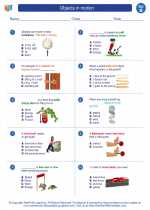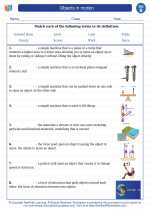Understanding Velocity
Velocity is a fundamental concept in physics that describes the rate at which an object changes its position. It is a vector quantity, meaning it has both magnitude and direction. The magnitude of velocity is the speed of an object, while the direction indicates the path along which the object is moving.
Calculating Velocity
The formula to calculate velocity is:
Velocity (v) = Displacement (Δx) / Time (Δt)
Where:
- Velocity (v) is the rate of change of position of an object over time.
- Displacement (Δx) is the change in position of the object.
- Time (Δt) is the duration over which the displacement occurs.
Units of Velocity
Velocity is typically expressed in units of distance per time, such as meters per second (m/s) or kilometers per hour (km/h).
Understanding Speed vs. Velocity
It's important to distinguish between speed and velocity. While speed only measures the rate of motion without considering direction, velocity takes into account both the speed and direction of an object's motion.
Study Guide for Velocity
To understand velocity better, it's important to focus on the following key points:
- Understand the difference between velocity and speed.
- Learn to calculate velocity using the displacement and time.
- Practice converting units of velocity (e.g., m/s to km/h).
- Explore real-world examples of velocity, such as the motion of vehicles, athletes, or celestial bodies.
- Understand the concept of instantaneous velocity and average velocity.
By mastering these concepts, you'll gain a solid understanding of velocity and its significance in the world of physics.
[Velocity] Related Worksheets and Study Guides:
.◂Science Worksheets and Study Guides Second Grade. Objects in motion

 Worksheet/Answer key
Worksheet/Answer key
 Worksheet/Answer key
Worksheet/Answer key
 Worksheet/Answer key
Worksheet/Answer key
 Vocabulary/Answer key
Vocabulary/Answer key
 Vocabulary/Answer key
Vocabulary/Answer key
